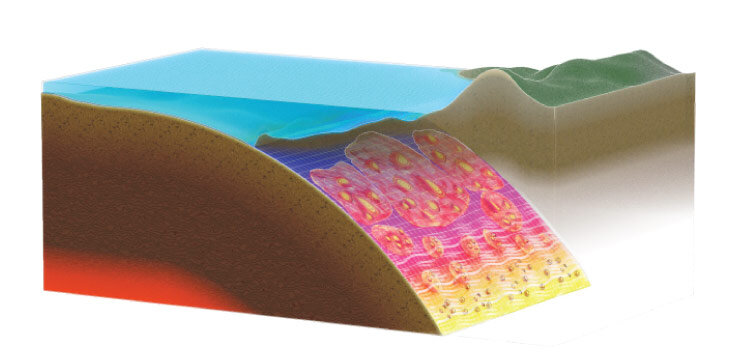The Silent Performers of the Seismic World
In the hidden corners of the earth, where the human eye struggles to peek, mysterious slow-slip events (SSEs) subtly unfold their seismic symphony, composing a silent but significant influence on our understanding of earthquakes and tsunamis. Recent discoveries off the Southern shores of Costa Rica have brought these quiet phenomena to the forefront of geophysical research, unraveling new aspects of their clandestine characteristics and crucial role in strain accumulation along subduction zones.
The Discovery: Illuminating the Shadows
A groundbreaking revelation has surfaced from the depths of the Osa Peninsula, where scientists, led by Perry et al., have meticulously unveiled the secretive SSEs, marking a pioneering chapter in Costa Rican seismic observation. These slow, sneaky slips are elusive, especially beneath the ocean’s vast expanses, where monitoring becomes a formidable challenge. However, perseverance paired with technological acumen has led to the discovery of five distinctive slow-slip events, casting a beacon of enlightenment on the cloudy corridors of seismic uncertainties.
A Closer Look: The Mechanics of Slow-Slip Events
Diving into the technicalities, SSEs are like the subtle whispers in the tumultuous world of tectonic activities. They tiptoe across geological fault lines, generating slight shifts over durations that sprawl from days to years, delicately orchestrating a sequence of mini-earthquakes that contribute to the geographical narrative. This scientific saga, marked by the consistency of occurring at shallower depths, crafts a consequential influence on tsunami hazards and shapes the potential topography of future seismic performances.
Insightful Contributions: Enhancing Predictive Proficiencies
Perry and the team’s insights have carved new pathways of understanding, enabling enhanced predictability concerning imminent seismic activities. Through their research, a confluence of historical data and innovative observations has emerged, facilitating a more nuanced comprehension of the relationship between slow-slip events and larger, more destructive earthquakes. The Osa Peninsula, a historical stage for robust seismic tales, now has its stories enriched with these newfound subtle actors, potentially refining the scripts of future geological episodes.
Reshaping Seismic Comprehension
In conclusion, the unveiling of these slow-slip events heralds a refined era of seismic comprehension and predictive accuracy. The newfound knowledge promises to embolden the scientific community’s approaches towards earthquake and tsunami hazards, ensuring that each silent shift and subtle slip beneath the earth’s surface contributes valuably to safeguarding the global environment and its inhabitants against the unforeseen fury of natural disasters.

